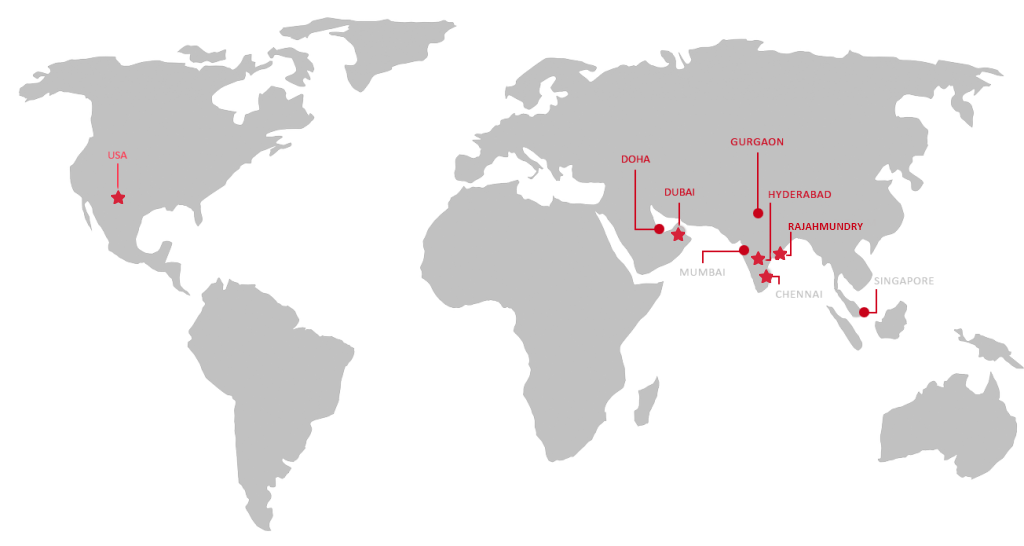 The decision to shift workloads to the cloud is loosely similar to building your own house. There is an assurance of the exact customizations you desire and room for expansion. However, time and capital investment often outweigh tolerating legacy on-premise systems with aging hardware and outdated software.
The decision to shift workloads to the cloud is loosely similar to building your own house. There is an assurance of the exact customizations you desire and room for expansion. However, time and capital investment often outweigh tolerating legacy on-premise systems with aging hardware and outdated software.
Most business leaders need no further convincing that the concept of Cloud is fruitful and revolutionary, and even essential too, to stay ahead of the competition in their respective marketplaces. Sadly, an already busy schedule, the lack of expertise to precisely plan the construction, and the fear of hindrances to mission-critical processes hold business leaders back from taking the important plunge to a house in the clouds.
Infolob is your friendly neighborhood cloud migration expert with a 13 year long portfolio. Our observation shows the number of organizations taking the plunge off the on-premise model and on to the cloud is rapidly increasing, which is a reflection of numerous value propositions offered by cloud computing including easy scalability, flexibility for innovation, remote accessibility, data analytics tools and opportunities, conversion of CAPEX into OPEX, and much more.
But before you take the plunge, the most basic question is: which among the three cloud service segments, i.e., SaaS, PaaS, and IaaS best suits your needs. Here is the difference between the three:
Software as a Service (SaaS)
This model focuses on managing access to the entire enterprise application. In a cohesive platform, providers enable SaaS users to simply log-in and utilize applications running on their infrastructure. Although this model limits the level of customization opportunities, in return, it significantly cuts down on configuration surface area for applications.
Application Platform or Platform as a Service (PaaS)
This team is responsible for the development and then deployment of the desired environment in the cloud as well as resourcing everything from the simplest of cloud-based applications to advanced cloud-only enterprise applications. Organizations access their applications via a secure Internet connection and have the flexibility to purchase resources as they go from the cloud service provider of their choice. PaaS helps save on the expense and complexities of owning and maintaining software licenses and corresponding infrastructure and middleware, container orchestrators, and other development tools. Organizations can concentrate on managing their applications and services while the cloud service provider handles the rest of their responsibilities.
Data Platform or Infrastructure as a Service (IaaS)
This delivers virtualized computing resources to an organization through the Internet. In IaaS, third-party vendors host the required hardware equipment besides providing storage systems, servers, operating systems, and other IT components to deliver an automated mode of computing. This team is also often involved in handling system maintenance, ensuring data backup, and sustaining business continuity.
Following is one-to-one comparison of SaaS, PaaS, and IaaS
SaaS
Scenario: The cloud provider manages it all including applications, data, runtime, middleware, O/S, servers, virtualization, storage, and networking.
Security Consequence: the provider is responsible for the organization’s data security. For example, using a third-party HR tool with predefined functionalities, which updates hardware and software itself. While these predefined functionalities are time-tested and serve a good purpose, customization is difficult. Moreover, the SaaS model also means that a breach into your provider’s network will leave your data vulnerable too.
Other challenges: Vendor lock-in or performance downtime, interoperability, minimal or delayed integration assistance, and minimal control.
When to use SaaS: Cases when security is important but secondary to other factors such as limited resources to build an application and storage system from ground-up. SaaS is also ideal for short-term assignments as well as seldom-used applications such as tax software.
PaaS
Scenario: Organizations manage their applications and data, while the provider manages all the rest of the infrastructure necessary for uninterrupted operations.
Security Consequence: Organizations keep total control of their applications and data. However, the PaaS model means organizations will have to build their own customized applications, database management systems, and handle their data security. Additionally, it owns the responsibility of software and hardware updates.
Other challenges: Vendor lock-in, integration complexities, legacy system customization, runtime issues, and operational limitations.
When to use PaaS: Instances when security is paramount with multiple developers involved in one project. PaaS is exceptionally beneficial when additional resources are required, internal or external. This cloud model adapts to new conditions well and does so with speed and flexibility.
IaaS
Scenario: Organizations manage applications, data, runtime, middleware, and O/S while the cloud provider handles all the remaining tools.
Security Consequence: IaaS incorporate efficient, scalable, and automated computer resources, and provides a completely self-service model to access and monitor computer systems, networks, storage, and other services. The primary benefit of the IaaS cloud model is leveraging all technologies and capabilities of a traditional data center without having to own or manage one, as it is outsourced via a virtual data center in the cloud.
Other challenges: Renovation of the legacy system to operate on cloud, internal resource training, and multi-tenancy security.
When to use IaaS: As the most secure and flexible cloud computing model, IaaS is ideal for medium and large organizations for whom data security is critical but wish to save on costs of managing a data center. Organizations experiencing rapid growth should also contemplate IaaS as scalability is swift.
Contact us at [email protected] with any questions or to get started on your Cloud journey!





